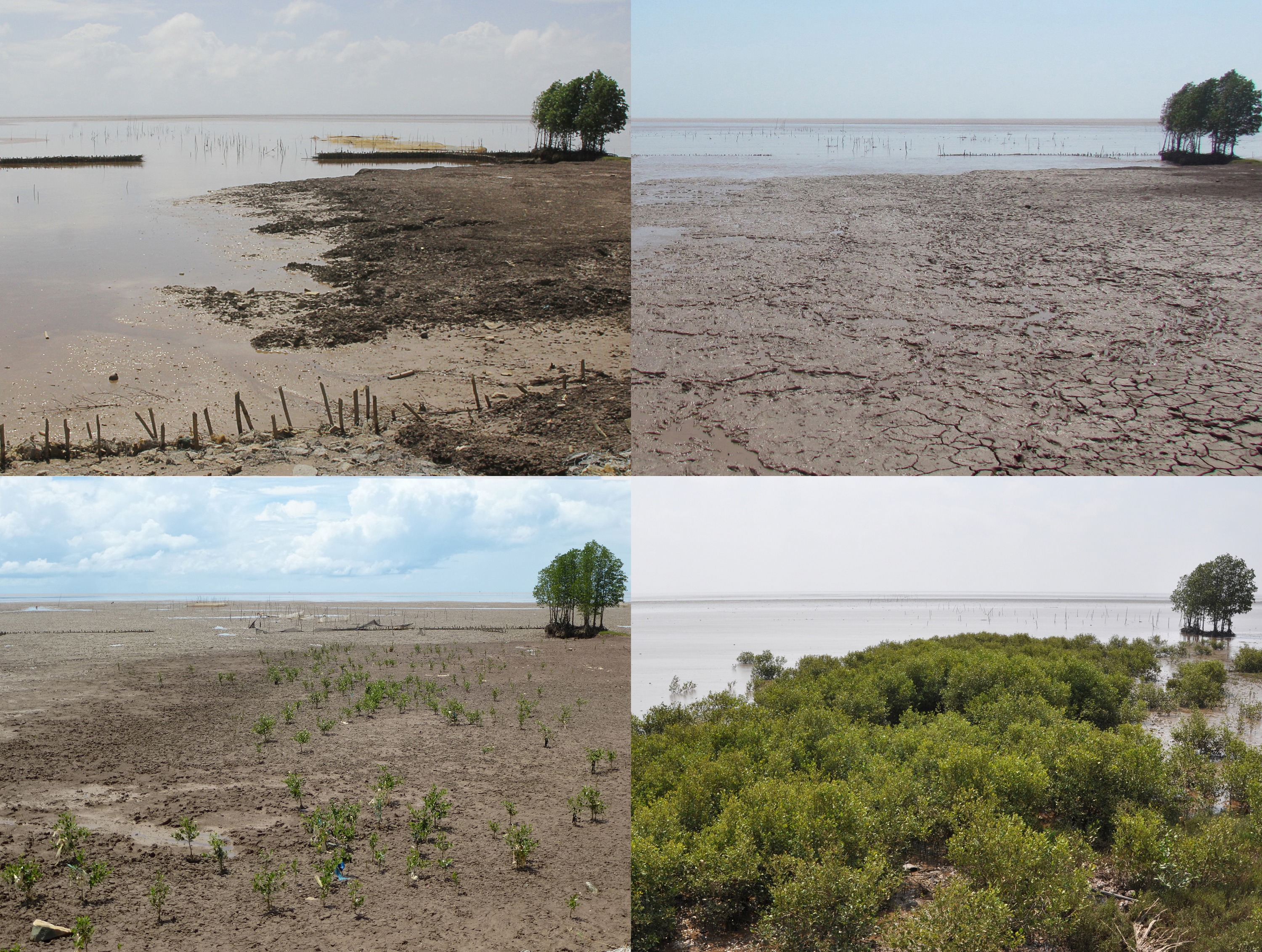

Bamboo T-fences are used to restore eroded floodplains and the fine sediment balance as a precondition for natural regeneration of mangroves forests – the latter will then form part of an effective area coastal protection strategy. After successful restoration of sites suitable for mangrove growth, natural regeneration of mangroves will occur. It is, however, essential that the mangroves are protected from human impacts, otherwise the cycle of degradation/destruction and expensive restoration will continue uninterrupted (see illustration under "How do the building blocks interact in the solution?"). This can best be achieved by involving local people in effective protection and management of mangroves through co-management. For more information see solution “Co-management (shared governance) of natural resources in the coastal area”. If rates of natural regeneration are insufficient, supplementary planting of mangroves may be necessary. In such cases, appropriate species need to be planted at the right sites at the correct time.
• Decision-makers understand coastal processes and mangrove ecology. • All stakeholders are willing to engage in shared governance (co-management) of mangroves.
Co-management, or shared governance, is an approach for sustainable and effective mangrove protection and management. It also provides livelihood for local people and contributes to better governance of natural resources. The results of the fixed-point photo monitoring from the coast of Soc Trang Province (Vietnam) from Nov. 2012 until Jan. 2015 clearly show the impacts of T-fences on sedimentation and, as a result, on natural regeneration of mangroves. Mangrove foresters need a sound understanding of mangrove ecology and of coastal processes and morphodynamics. The most effective way of planting mangroves is to learn from nature, i.e. mimic how nature plants, which species nature plants and the way nature creates a species zonation. This zonation leads to optimised coastal protection through wave attenuation by above-ground root structures along with soil stabilisation by below-ground root structures (see illustration in "How do the building blocks interact in the solution?").